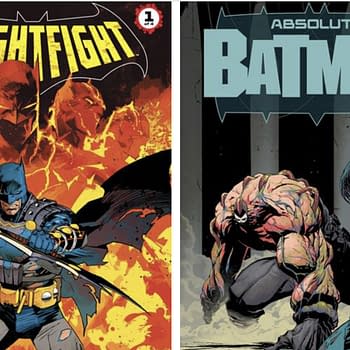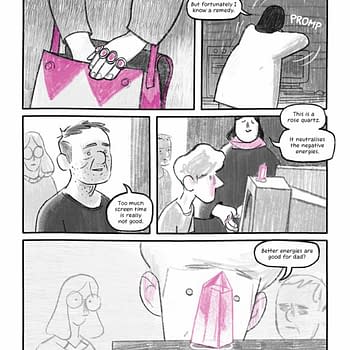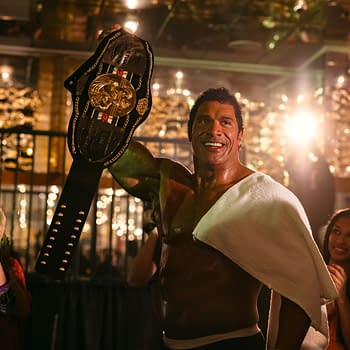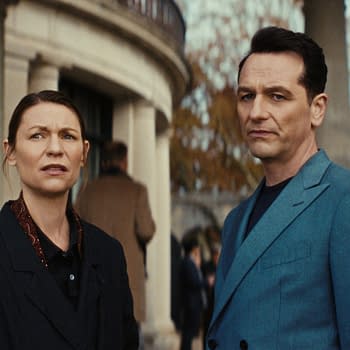Posted in: Movies, TV | Tagged:
Tumanbay Director John Dryden On The History Of The Mamluk Empire – Look! It Moves! Special
Adi Tantimedh writes,
Tumanbay, BBC Radio 4's news epic historical thriller series has begun its 10-week run. It's about History, court intrigue, assassinations, plots, betrayals, plague and insurrection, affecting characters from all walks of life in an ancient empire, hyped as radio drama's answer to radio drama's Game of Thrones. The difference is the Mamluk Empire was real, and offers a rich setting for drama.
This week, we have the series producer John Dryden writing about the significance and complexity of the Mamluks that will come into play during the series:
"The Egypt of the pyramids and the great Pharaos is familiar to all, as is the modern nation with all its triumphs and tragedies but the Mamluks, who created a great civilisation and ruled the country from the 13th to the 16th century are still virtually unknown. Here are some facts about this fascinating society.
Just about everyone started out as a slave, sold in the markets of the great cities – but they didn't have to stay that way. The Mamluks believed in using talent wherever they found it and slaves could rise through the ranks of the army, the civil service, the arts and sciences or trade to positions of wealth and power.
Most slaves were of Turkish descent and from the Steppes of Central Asia where life was tough during long harsh winters and survival marginal. Surplus children were an encumbrance and at the age of about 13, younger sons were often sold to traders. Boys of this age were ideal for both the slave traders and their Mamluk clients. The relationship between the slave trader and his child slave was close, with the trader acting as a surrogate parent during the journey and in the slave markets. It wasn't unusual for the trader to offer an after-sale service, mentoring the novice during his apprenticeship and up to the boys' full entry into the service of a lord.
In 1347 slave traders from the Black Sea brought with them something far deadlier than a cargo of future Mamluk warriors: the Black Death. Plague infested the whole of the known world, but nowhere was it fiercer than in Cairo. Over two years it wiped out an estimated one-third of the population.
The cost might have been even higher had Cairo not had dozens of hospitals, maintained at the public expense and by grants from the wealthy; there were separate wards for men and women, asylums for the mentally ill and even 'rest homes' for the recovering and weak.
On the other hand, anticipating our modern world, there were ambulance chasing lawyers happy to sue doctors who didn't deliver all the patient expected – the doctors, highly skilled and prized throughout the Mediterranean, responded by introducing contracts to be signed before treatment!
When treatment wasn't free, it could be paid for in instalments, as could a variety of other goods including slaves. Bankers offered mortgages to house buyers and there was an efficient postal service – but there were also problems with pollution, traffic (camels had to pass on the left but the streets were frequently too narrow to allow this) and combustible loads like wood and straw were banned from built up areas, though zoning officials frequently had to demolish properties which were built beyond the designated boundary lines.
In Islam the representation of a living being is forbidden, so there were no dolls or stuffed toys for the princesses of the palace. Instead, they played with live babies. The young princesses would comb and plait their hair and dress them in clothing they had sewn themselves. They would teach them about cleanliness and deportment, and in spite of being children themselves, would play mother to the little girls, giving them their first lessons. If they survived this upbringing, slave girls often became ladies in waiting or went on to marry into notable families.
The Mamluk empire was at the apex of its power in the 14th century under Sultan al-Nasir Muhammad ibn Qalawun. He ruled for 41 years a record never surpassed by any Mamluk sovereign. He maintained power by being utterly ruthless, having some 150 of his amirs killed and thousands of lesser opponents tortured by the most diabolical methods. By now Cairo was one of the wealthiest cities in the world – the Ottoman Turks to the north were not yet a threat; the Mongol armies from the east had been defeated. Christian Europe sent merchants, not armies, to the Mamluk capital, which reaped huge profits from being the gateway to the Orient. When al-Nasir died his fourteen sons were the wealthiest fourteen individuals on the planet.
The Mamluks valued science and art highly and their libraries held many great texts from the ancient world. They were leaders in medicine and their architectural brilliance influenced the west, through trade with the Republic of Venice. Their soldiers developed a code of chivalry similar to that of the knights of the Western world and, as the Empire declined and the power of Ottoman Turkey grew, they often found themselves at a disadvantage because they would not use unchivalrous tactics against their enemies.
In 1516 Sultan al-Ghuri, whose passions were perfume and flowers, led his army out of the city to fight the Ottoman Turks. He had been provoked by the Ottoman sultan Selim I "The Grim" who had paraded the Mamluk ambassador naked through the streets of Constantinople with a bucket of manure on his head. Sultan al-Ghuri was determined to teach this upstart a lesson but the Mamluks had not had to fight in earnest for eighty years and their chivalrous tactics were no match for the ruthless Ottomans. It was to signal the end of the Mamluk dynasty and the rise of the Ottomans as the dominant force in the Middle East."
@John Dryden
Each new episode of Tumanbay can be downloaded from the BBC website after original broadcast on Wednesday.
http://www.bbc.co.uk/programmes/b06qcrhv/episodes/downloads
The sound of empires at lookitmoves@gmail.com
Follow the official LOOK! IT MOVES! twitter feed at http://twitter.com/lookitmoves for thoughts and snark on media and pop culture, stuff for future columns and stuff I may never spend a whole column writing about.
Look! It Moves! © Adisakdi Tantimedh
























